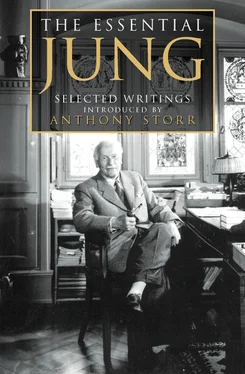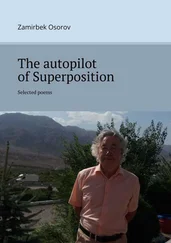Jung found that the new centre expressed itself in quaternity symbols and circular structures which he called “mandalas,” the Sanskrit name applied to images of this kind which, in the East, are used for meditation. Mandalas symbolize an integrating factor. In cases where consciousness is confused, mandalas may appear as compensatory attempts at self-healing by imposing an ordered structure. The self, of which the mandala is a symbol, is the archetype of unity and totality. Jung believed that this archetype was the underlying reality manifesting itself in the various systems of monotheism. The self, therefore, is the God within; and the individual, in seeking self-realization and unity, becomes the means through which “God seeks his goal.” (CW 10, par. 588) By fulfilling his own highest potential, the individual is not only realizing the meaning of life, but also fulfilling God’s will.
Jung believed that only exceptional individuals reached the peaks of individual development. Individuation means parting company with the crowd; and this at first accentuates loneliness, and may seem alarming. Most human beings are content to remain safely with the majority, conforming to the conventions and beliefs shared by members of their family, church or political party. But exceptional individuals are impelled by their inner nature to seek their own path; and, although human psyches, like human bodies, share a basic structure, the individual psyche is “an endlessly varied recombination of age-old components”. (MDR, p. 223/235) Jung continued to affirm that the highest ideals and values were carried by the individual, never by an ideology or the State.
Jung’s major contribution to psychology, therefore, lies in the field of adult development. Freud and his followers were primarily interested in the earliest development of the young child, since they considered that the majority of neuroses originated in the first five years of life. Freudian analysis had as its aim the reconstruction and recall of the patient’s earliest years. It was assumed that, when the repressed, infantile material had been made conscious, the patient would become free of the malign effects of his childhood and lose the neurotic symptoms which were its consequence. Freudian analysis, therefore, was, and is, primarily orientated toward the patient’s past.
Jung, of course, was well aware of the importance of early childhood in determining personality development. Indeed, in cases in which it was clear that the patient’s primary problem was emancipating himself from the influence of home and parents, Jung advocated proceeding along Freudian or Adlerian lines. But Jung was inclined to leave such analyses to others. The patients who interested him were those who had already freed themselves from the past sufficiently to become established in their own right; who were often successful in worldly terms; but who, in the mid-period of their lives, found that the world had become stale and unprofitable. Such people were seeking a meaning to their lives; and Jung’s aim was to guide them along the path of individuation. Jungian analysis, therefore, was, and is, primarily orientated toward the patient’s future.
The quest for a new synthesis of personality involves taking into account those parts of the whole which have been neglected. As pointed out above, Jung found that those who consulted him because of the emptiness of their lives were one-sided in their development: too much identified with their predominant attitude and function. Since everyone has both an extraverted and an introverted potential, and also needs all four functions (thinking, feeling, sensation and intuition) if he is to live life fully, it follows that one task of analysis is to help the patient become aware of neglected aspects of his personality. Such aspects appear in dreams; and the study of dreams became even more important in Jungian analysis than in its Freudian counterpart.
Another technique developed by Jung was that of “active imagination.” Jung encouraged his patients to enter a state of reverie in which judgment was suspended but consciousness preserved. They were then enjoined to note what fantasies occurred to them, and to let these fantasies go their own way without interference. Jung encouraged his patients to draw and paint their fantasies, finding that this technique both helped the patient to rediscover hidden parts of himself and also portrayed the psychological journey upon which he was embarked. Jung was the first analyst to supplement verbal exchange in this way; and the increasing use of painting, modelling and music in therapy bears witness to Jung’s prescience.
In times when so much importance is attributed to good or bad interpersonal relationships as determinants of mental health or illness, Jung’s concentration upon the individual’s relations with the different parts of his own psyche may seem puzzling. Jung was well aware of the importance of interpersonal relationships, but believed that it was only when the individual had come to terms with himself that satisfactory relationships with others could be achieved. Jung wrote: “Companionship thrives only when each individual remembers his individuality and does not identify himself with others.” (MDR, p. 328/356)
Individuation is not the same as individualism, “which is essentially no more than a morbid reaction against an equally futile collectivism. In contrast to all this, the natural process of individuation brings to birth a consciousness of human community precisely because it makes us aware of the unconscious, which unites and is common to all mankind.” (CW 16, par. 227)
Although Jung claimed that what he discovered were facts which anyone else who adopted the same technique would confirm, he was also aware that subjective factors were bound to influence his point of view. “Philosophical criticism has helped me to see that every psychology – my own included – has the character of a subjective confession … Even when I am dealing with empirical data I am necessarily speaking about myself.” (CW 4, par. 774) It may be helpful to glance at some of the influences which contributed to Jung’s particular viewpoint.
For the first nine years of his life, Jung remained an only child who lived primarily in his imagination and who spent much of his time in solitary play. When he first went to school, he found that, in trying to adapt to his rural companions, he tended to become alienated from himself, as sensitive and imaginative people often do when trying too hard to “fit in.” It became important to him to preserve his inner imaginative world from intrusion. In his autobiography, he describes various secret rituals by means of which he kept contact with his inner world and shielded it from others. In the “Late Thoughts” which form part of his autobiography, Jung wrote: “There is no better means of intensifying the treasured feeling of individuality than the possession of a secret which the individual is pledged to guard.” (MDR, p. 315/342) In the last chapter of the same book, he wrote: “As a child I felt myself to be alone, and I am still, because I know things and must hint at things which others apparently know nothing of, and for the most part do not want to know.” (MDR, p. 327/356) Jung’s childhood discovery of the vital importance of remaining in touch with the inner world is one factor accounting for his emphasis on healing and the growth of personality as essentially an inner process, concentrating upon the individual’s relation with the various aspects of his own psyche, rather than upon his relationships with other human beings.
From his earliest years, Jung was exposed to a great deal of discussion of religious matters. His father was a minister in the Swiss Reformed Church; two of his uncles were parsons; and there were no less than six parsons in his mother’s family. Very early in his life, so Jung records, he experienced dreams and visions of a religious kind which convinced him not only that religious experience was a personal matter which might have little to do with established creeds, but also that God had a “dark” side which did not accord with the conventional Christian image of an ever-loving father. His own father was content to promulgate the teachings of his church, though Jung came to question the genuineness of his faith. He was unable, or unwilling, to discuss the doubts with which his more gifted son confronted him. Jung, therefore, found himself in the position of being unable to subscribe to the faith in which he had been reared, while at the same time continuing to think that individuals could neither be happy nor healthy unless they acknowledged their dependence upon some higher power than that of the ego. Jung himself became one of those exceptional individuals who so much interested him as patients: individuals who were compelled by their own natures to strike out on their own, abandon conventional beliefs and find what they were seeking within their own psyches. Although Jung continued to profess allegiance to what he called “the extreme left wing of Protestantism,” his religious ideas became so unconventional that he gave offence to both Catholic and Protestant theologians, although some from both camps continued to find value in what Jung had to say.
Читать дальше












